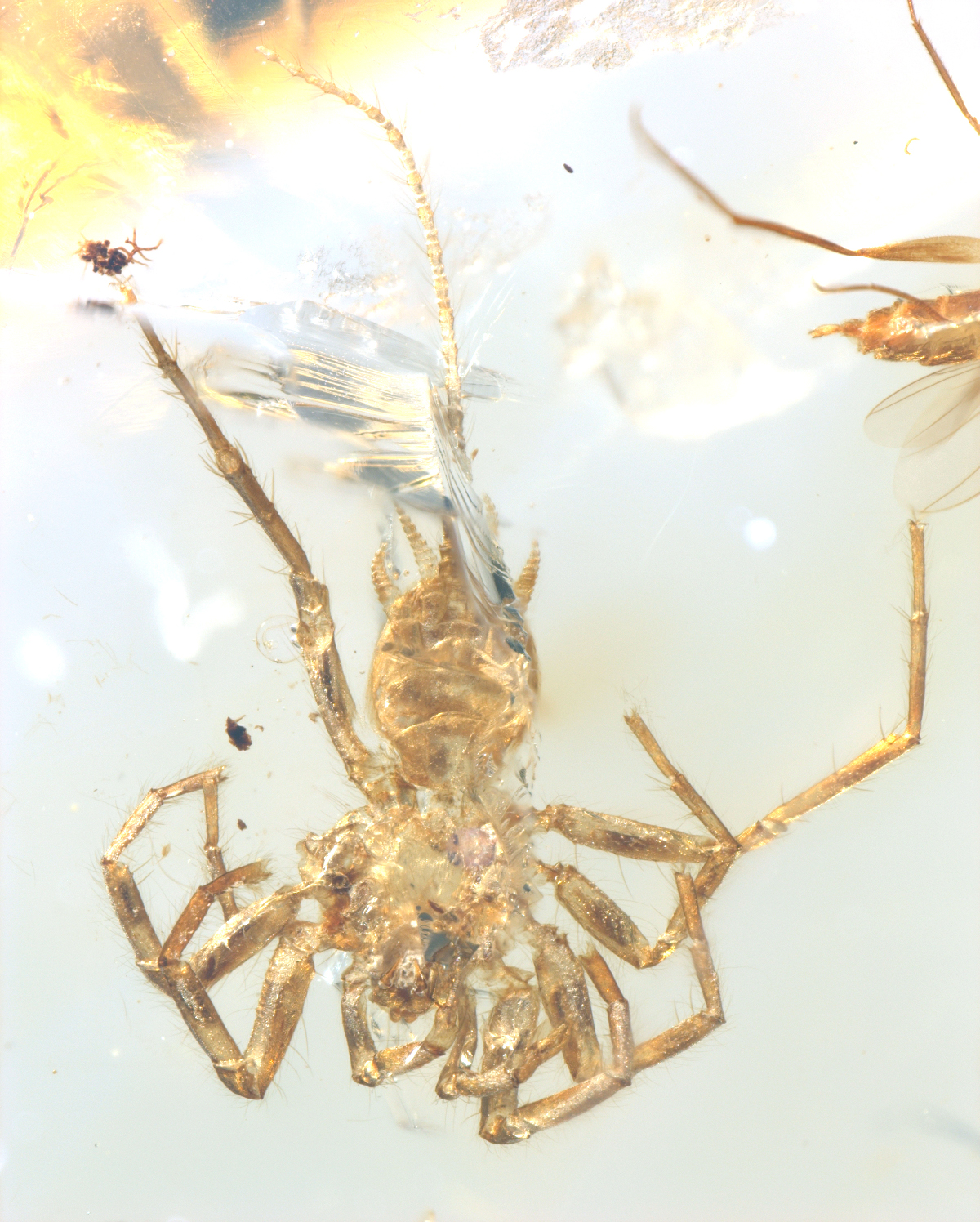Spider finding splits views
 The discovery of a 100-million-year-old spider species has split researchers.
The discovery of a 100-million-year-old spider species has split researchers.
Four specimens of the newly-described species were found preserved in Burmese amber.
They have a curious mixture of ancient and modern features, triggering the research group to split into two opposing camps asking whether it is one of the first true spiders, or last of the ancients.
The eight-legged enigma has multi-segmented spinnerets (the silk-spinning organs characteristic of the modern spider), supporting the true spider theory, but it also has a long tail-like appendage like that of a scorpion called a telson — something not seen in modern-day spiders.
It has been dubbed a ‘chimaera spider’ and officially named Chimerachne yingi.
Spiders have been an extremely successful lineage, remaining remarkably similar across millions of years, but some aspects of the species’ development remain unclear.
Due to its combination of ancient and modern features, the two papers disagree on where C. yingi – which is 200 million years younger than the first spider ancestor - should sit in the evolutionary tree.
Giribet and colleagues place it within an order of extinct spider relatives (Uraraneida), while Wang and colleagues conclude it could be one of the first true spiders (Araneae).







 Print
Print